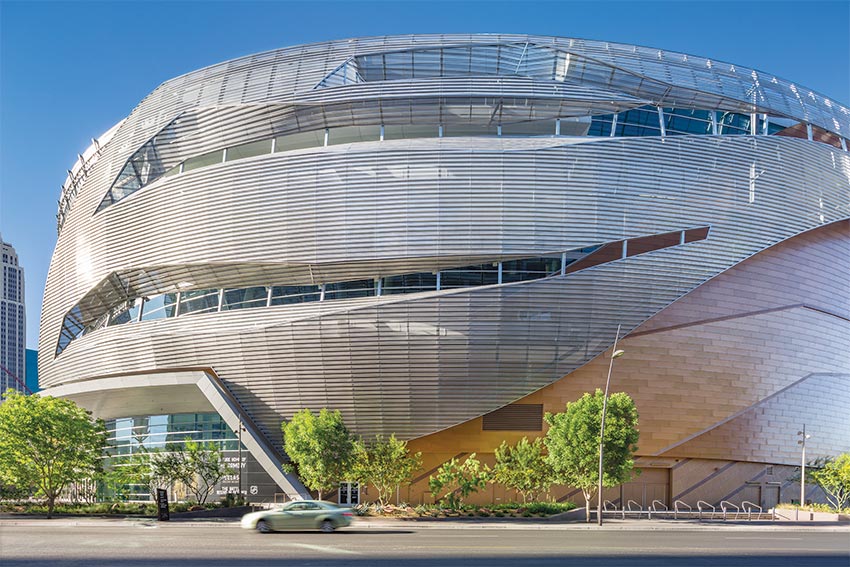Building Resiliency
 1.25 AIA LU/HSW; 0.1 IACET CEU*; 1 AIBD P-CE; AAA 1 Structured Learning Hour; This course can be self-reported to the AANB, as per their CE Guidelines; AAPEI 1 Structured Learning Hour; This course can be self-reported to the AIBC, as per their CE Guidelines.; MAA 1 Structured Learning Hour; This course can be self-reported to the NLAA.; This course can be self-reported to the NSAA; NWTAA 1 Structured Learning Hour; OAA 1 Learning Hour; SAA 1 Hour of Core Learning
1.25 AIA LU/HSW; 0.1 IACET CEU*; 1 AIBD P-CE; AAA 1 Structured Learning Hour; This course can be self-reported to the AANB, as per their CE Guidelines; AAPEI 1 Structured Learning Hour; This course can be self-reported to the AIBC, as per their CE Guidelines.; MAA 1 Structured Learning Hour; This course can be self-reported to the NLAA.; This course can be self-reported to the NSAA; NWTAA 1 Structured Learning Hour; OAA 1 Learning Hour; SAA 1 Hour of Core Learning
Learning Objectives:
- List key natural and man-made disasters that affect the built environment.
- Define resilient design and how it benefits cities, communities, and the economy.
- Discuss how designing for resiliency can impact building design and improve occupant health, safety, and well-being.
- Describe the benefits of specifying products designed for resiliency.
- Explain how buildings can achieve a U.S. Resiliency Council (USRC) rating.
This course is part of the Resiliency Academy
January 2018: Intense rainfall in Montecito, California, fell on land already scarred by wildfires. The loose soil on the bare land quickly turned to mud and produced massive mudslides that flattened homes and other buildings and covered local freeways. Gas lines ruptured and fires broke out. Twenty-one people were killed, and an estimated $208 million in commercial damages were sustained, with up to an estimated $204 million to rebuild or repair residential properties.1

Photo: Lester Ali
Architectural louvers add a modern aesthetic to a building’s exterior while allowing air to move freely into its mechanical system. They can also be engineered to withstand severe weather events as well as accommodate fluctuating temperature extremes and pressure drops to ensure occupant comfort and safety.
May 2018: More than 8 inches of rain fell over the course of just a few hours in historic Ellicott City, Maryland, and created a river that rushed through the city. The flood devastated commercial and residential properties, swept away cars and people, and left the area in ruin, just two years after the city had suffered millions of dollars in damage and lost lives in an earlier flood.
September 2018: The large, slow-moving Hurricane Florence hit the Carolinas with high winds and record rainfall that fed into local rivers, which rose to record heights and flooded the areas. North Carolina suffered 36 inches of rain, with the Cape Fear River in Wilmington reaching a high-water mark of 8.27 feet.2 South Carolina got 24 inches of rain, with many regions suffering from floodwaters. Fifty-three people died as a result of the storm. Estimated damage totaled $24.2 billion.3
October 2018: Hurricane Michael, a Category 4 storm, made landfall in Florida with 150-mph winds and worked its way up to Georgia, which last had a major hurricane track inland in 1898. Michael continued up the Carolinas, which had been hit by Hurricane Florence the previous month, and then into Virginia. Recorded as the strongest storm since Hurricane Camille in 1969, Michael brought the strongest winds recorded in the region since 1992, when Hurricane Andrew flattened communities in Florida. Locations such as Panama City and Mexico Beach, Florida, were practically demolished. In Florida alone, 43 people were killed, and 10 more were lost in other affected states. The estimated damage came to $25.2 billion.4
November 2018: California wildfires flattened towns in both Northern California and Southern California. The Camp Fire blaze in Northern California destroyed more than 150,000 acres, including 130,000 homes and the entire town of Paradise. The fire is on record as the deadliest wildfire in California history. Between the fires, 106 people died, with at least 85 from the Camp Fire. The economic damage was upward of a record total of $24.2 billion.
This list of natural disasters is by no means exhaustive for the United States in 2018. Tornados, blizzards, hail storms, and extreme heat and cold events all impacted the country, racking up an estimated $150 billion in damages for the year. Data from almost the past 40 years shows a clear trend: severe storms are more common than they were even 10 years ago, let alone 20, 30, or 40. Droughts and wildfires have become increasingly common, and over the past 10 years, flooding has increased as part of the severe storm impact. Some of these weather events have become so powerful that they have literally destroyed communities; those communities will eventually need to rebuild and ideally will do so using intentionally resilient building designs that can help mitigate future hazards and reduce risks of human and economic loss.
Rebuilding devastated communities, however, is only one part of the challenge. Communities throughout the country are at risk of the impacts of natural disasters, and the disasters are not limited to weather-related risks. Parts of the country, such as California, are in seismic zones and thus can be damaged by earthquakes. And as news from around the world has shown, the U.S. infrastructure is by no means alone in being affected by storms and earthquakes; this is a global concern, and resilient building design can play an important role in protecting communities.
While so many of the buildings damaged or destroyed by storms, fires, and floods have been residential properties, we will be focusing on resilient design for commercial properties and retrofit projects. The point is not to minimize the importance of residential properties but instead highlight the opportunities in the commercial sector. These projects include, to a lesser extent, buildings that may be damaged by man-made disasters as well, such as industrial explosions.
Most Common Types of Natural Disasters and Hazards
Before we address the issues of resilient design, let’s look at the most common types of natural disasters and how they impact the built environment. Some of the following types go hand in hand, such as hurricanes and flooding; however, it helps to understand each in its own right.
Wind and Storm Events
Severe weather can come in many different forms, but the most common are:
- hurricanes;
- blizzards;
- ice storms;
- tornados; and
- damaging winds.
The above storm events all typically involve extremely high winds. In the case of hurricanes, blizzards, and ice storms, there is usually other damage such as flooding, which will be covered in the section on water inundation. For now, let’s look at the ways that high winds can impact buildings.
From a physical impact sense, high winds impose very high lateral (horizontal) and uplift (vertical) forces on buildings. Lateral forces, or high winds that impact the building, create differential pressure on the structure. Differential pressure refers to the difference in pressure between two points of a system. In the case of a building, that could mean two opposite sides, typically referred to as the windward and leeward sides. When differential pressure gets to be too high, as it can during hurricanes, it can deform or dislodge building materials, such as walls, windows, doors, and even structural beams. If you consider an extremely high wind blowing against a wall or roof and flowing over and around a building, you can imagine high pressure pushing against the windward side and suction pressure pulling along the leeward side. When these two forces combine, an uplift force may occur and pull tiles and sheathings off the roof. In extreme cases, it may even pull off the entire roof of a structure.
Structural damage from high winds depends on many different factors, from the wind speed—both sustained and gusts—to the building height and whether the building is shielded by nearby structures or topography. The building structure itself plays an important role in potential damage, mainly whether the frame, connections, and envelope have been designed to withstand high winds, but also factors such as the structure’s shape and whether windows, doors, and even vents are strong—but also protected.
In addition to damages caused by wind forces, wind-borne debris can also impact a building, particularly vulnerable features such as windows, skylights, doors, and even siding. Debris can be anything from materials dislodged from other buildings to those knocked loose by the wind. When wind-borne debris impacts a structure, it does so at a very high speed and can easily puncture the building envelope. Once this happens, the structure is at risk of water intrusion from the rain or subsequent flooding.
Floods and Water Inundation
Floods can happen due to many different reasons, from heavy rainfall over a short time during a hurricane or even a severe thunderstorm, to snow melt, dry soil, or storm surges. Three of the more common types of floods are coastal (surge flood), fluvial (river flood), and pluvial (surface flood).
Coastal floods are most often caused by severe weather, such as hurricanes, that produce high winds. These winds push the water onto shore—causing the water to “surge” onto the surrounding low-lying land. Coastal flooding can be exceedingly costly, especially if many industries and ports are located in the region.
Fluvial, or river floods, typically occur when rivers overflow after excessive rainfall, but they can also happen when heavy snow or ice melts upstream. Flash flooding is often associated with fluvial floods and is known to cause extensive damage because it carries debris along with the flood.
Finally, pluvial, or surface floods, are the product of heavy rainfall in areas not near a body of water. Often, these floods happen in areas where urban drainage systems cannot handle the flow or suburban development has left the ground unable to absorb the water. In both cases, water flows along streets, damaging buildings along its path. Pluvial flooding tends to happen at the same time as coastal and fluvial flooding.
In addition to these three basic types of floods, certain coastal areas are at risk of flooding from tsunamis or seiches. A seiche is a standing wave in an enclosed or partially enclosed body of water, such as a lake, bay, or harbor—but seiches can also happen in reservoirs and even swimming pools. Seiches behave much in the same manner as a storm surge along coasts, but because they are a wave in an enclosed body of water, they can move back and forth for a long time, causing flooding whenever they encounter the shoreline.
Regardless of the source, water inundation can severely damage buildings in several ways. First, in the case where a building is surrounded by water, the structure will be subjected to different forces. For example, standing or slow-moving water can push against the different sides of the structure, exerting hydrostatic forces. If the soil beneath the structure is saturated, a building may lift and float, as often happens with residential homes. Alternatively, hydrodynamic forces from fast-flowing water around the structure can erode foundations, pull off walls, and even dislodge a building from its foundation. As with high winds, rapidly rushing water can carry debris with it that can damage buildings. Finally, a lingering impact of floods is damage from eventual mold growth.










